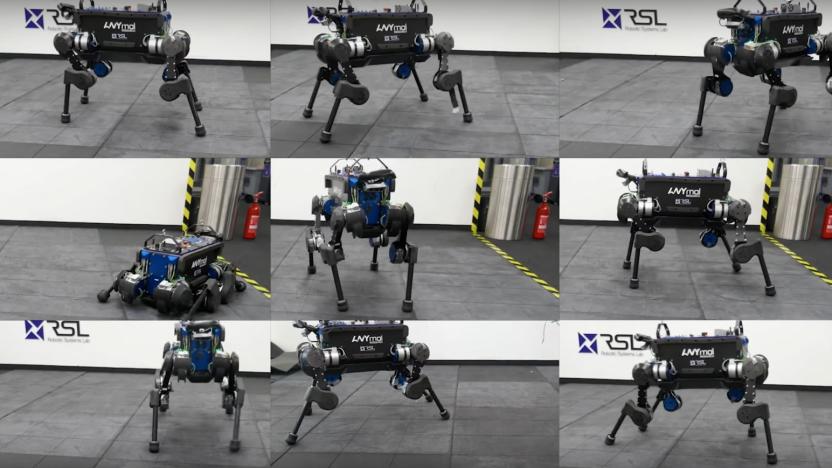ComputerSimulations
Latest

Researchers train robot dog to pick itself back up after a fall
Researchers have taught a robot dog to overcome one of the toughest challenges for a four-legged droid: how to get back up after a fall. In a paper published in the Science Robotics journal, its Swiss creators describe how they trained a neural network in a computer simulation to make the ultimate guard bot. Then they went and kicked the canine around in real life (because that's what researchers do) to see if their technique worked. It did: the robot's digital training regimen made it 25 times faster, more resilient, and able to adapt to any given environment, according to the team.

Scientists create first computer simulation of a complete organism
Everyone, meet Mycoplasma genitalium, the subject of many scientific papers, even more vists to the clinic and now the first organism to be entirely recreated in binary. Computer models are often used for simplicity, or when studying the real thing just ain't viable, but most look at an isolated process. Stanford researchers wanted to break with tradition and selected one of the simplest organisms around, M. genitalium, to be their test subject. They collated data from over 900 publications to account for everything going on inside the bacterial cell. But it wasn't just a case of running a model of each cellular process. They had to account for all the interactions that go on -- basically, a hell of a lot of math. The team managed to recreate cell division using the model, although a single pass took almost 10 hours with MATLAB software running on a 128-core Linux cluster. The representation was so accurate it predicted what M. genitalium looks like, just from the genetic data. And, despite the raft of research already conducted on the bacterium, the model revealed previously undiscovered inconsistencies in individual cell cycles. Such simulations could be used in the future to better understand the complicated biology of diseases like cancer and Alzheimer's. Looks like we're going to need more cores in that cluster. If you'd like to hear Stanford researcher Markus Covert's view on the work, we've embedded some footage beyond the fold.

